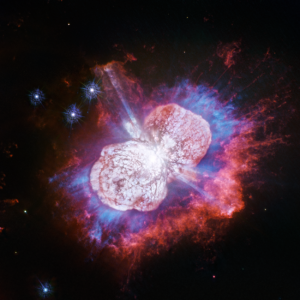The Hubble Space Telescope caught one spectacular show as the outburst of a supermassive star glows in bright, exploding fireworks.
The star, called Eta Carinae, first erupted 170 years ago and was the second-brightest star in our sky for a little more than a decade. However, over time, the star has slowly faded and become harder to see with the naked eye.
Hubble has observed the star for 25 years, according to a statement by NASA. Most recently, astronomers used its Wide Field Camera 3 to map the ultraviolet light glow of magnesium embedded in warm gas and found the gas in places where it had not been before.
more at space.com
Ask me anything
Explore related questions





